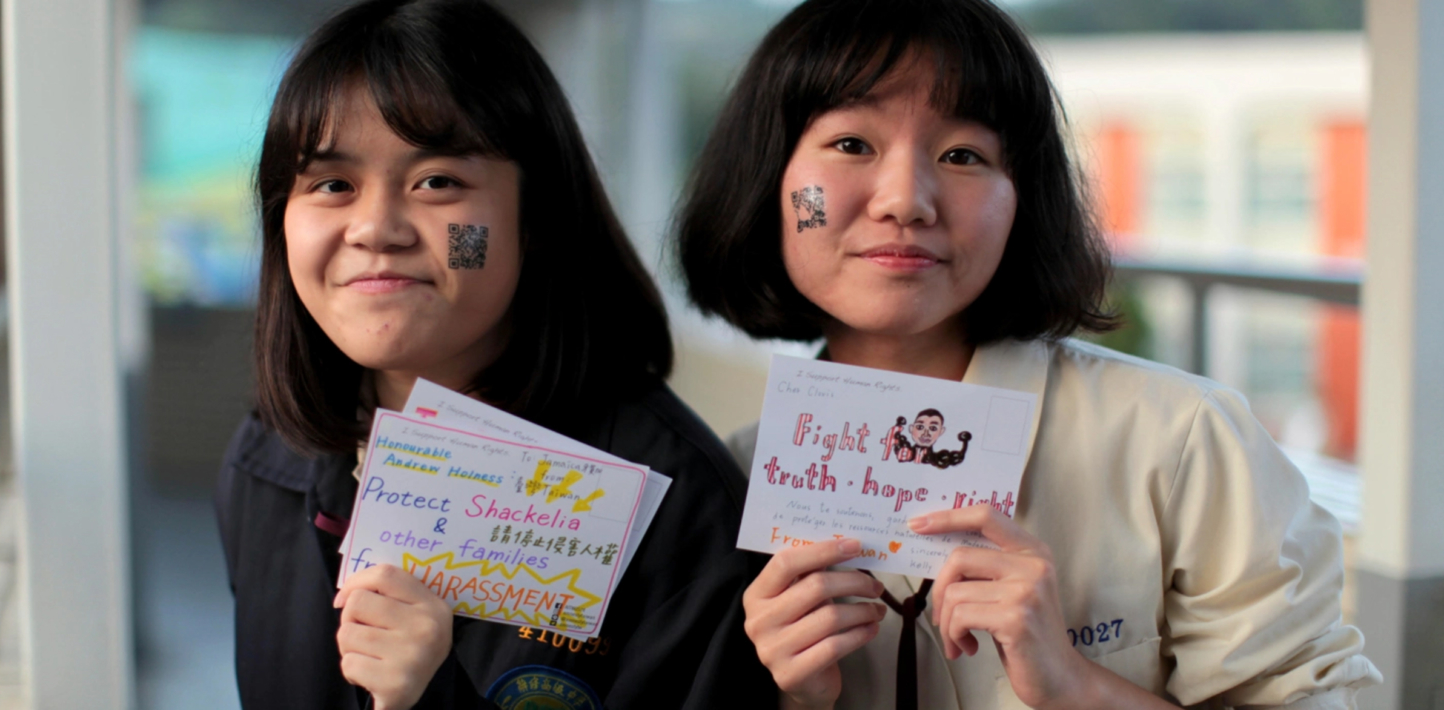Press Release
Amnesty International’s record-breaking Write for Rights campaign launches today, marking 20 years of the global letter-writing drive. Since 2001, the organization has collected millions of messages written in support of people who are unjustly detained or persecuted, and Write for Rights has become the world’s biggest human rights event.
This year, Amnesty International is calling for justice for 10 more brave individuals and groups, including a citizen journalist imprisoned in China for reporting on Covid-19, an environmental activist imprisoned in Guatemala for campaigning against the destruction of one of his country’s sacred rivers, a teenage journalist from the occupied West Bank and a Mexican women’s rights activist who survived a police shooting.
“Every year, Write for Rights offers a lifeline for people around the world whose human rights are under attack, simply because they stood up for what they believe in. They are challenging inequality, discrimination, political repression and campaigning to protect all our rights, whether for environmental justice or against the death penalty. The Write for Rights campaign signifies everything Amnesty stands for – people from all over the world coming with one voice, in global solidarity, to challenge injustice,” said Agnès Callamard, Amnesty International’s Secretary General.
They need you to stand with them – whether that’s through a tweet, a signature or a letter to those in authority. Sometimes the smallest act can make the biggest difference. The last 20 years of Write for Rights shows words really do have power.
Agnès Callamard
Every December, people around the world write millions of letters, emails, tweets, Facebook posts and postcards in support of those whose human rights are under attack. Write for Rights has helped transform the lives of more than 100 people since 2001, freeing them from torture, harassment, or unjust imprisonment.
Write for Rights began 20 years ago in Warsaw, Poland, when a group of friends decided to celebrate Human Rights Day (10 December) with a 24-hour letter-writing marathon. From 2,326 letters in 2001 to 4.5 million letters, tweets and petition signatures in 2020, Write for Rights has grown into the world’s biggest human rights campaign.
It’s a campaign that really does work – as Jani Silva, an environmental activist from Colombia, can attest. Jani’s fearless opposition to environment contamination and human rights violations has led to harassment, intimidation and death threats. In 2020, more than 400,000 people took action through Write for Rights, calling for her protection.
I am so very grateful for the letters. From the bottom of my heart, this campaign has kept me alive. It’s what has stopped them from killing me because they know that you are there.
Jani Silva
New Human Rights Education toolkits for this year’s Write for Rights campaign
Amnesty International’s “Write for Rights” campaign takes place annually around 10 December, which is Human Rights Day (commemorating the day when the Universal Declaration of Human Rights was adopted in 1948). Write for Rights aims to bring about change to the lives of people or communities that have suffered or are at risk of human rights violations. Among the many actions that take place as part of Write for Rights, Amnesty raises cases of individuals, groups and communities with decisionmakers who can change the situation, gives visibility to those cases by organizing public actions, and brings international attention through media and internet exposure.
This human rights education activity can take place in a variety of settings, such as a school classroom, a community group, a family group, an activist group, online or offline. As a facilitator, you can adapt the activity to best suit the needs and context of the group you are working with. For example, you may want to consider what knowledge the group already has about the issues discussed, the size of your group and how to best organize the activity to allow for active participation, the physical setting of your activity and any limitations. When participants take action on a case, discuss with them whether it is safe for them to do so – why or why not?
The activities are all based on participatory learning methods in which learners are not merely presented with information, they explore, discuss, analyze and question issues relating to the cases. This methodology is very important for the wider learning objectives because participants will:
- develop key competencies and skills
- have the opportunity to form their own opinions, raise questions, and gain a deeper understanding of the issues presented.
- take control of their learning, and shapes discussions according to their interests, abilities and concerns.
- have the space required for them to engage emotionally and develop their own attitudes


